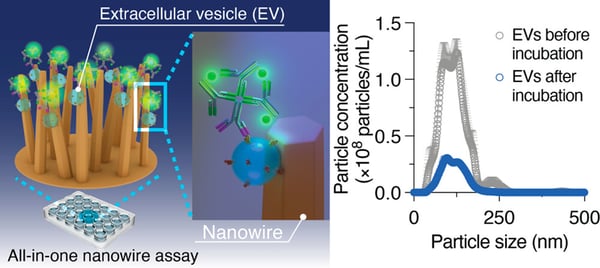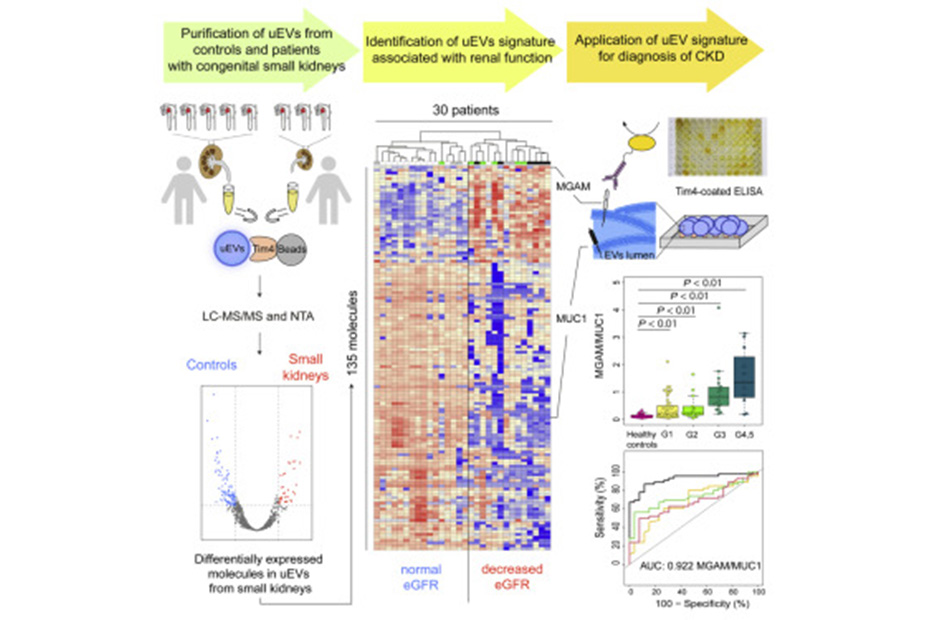Share this
Authors
Kunanon Chattrairat, Takao Yasui, Shunsuke Suzuki, Atsushi Natsume, Kazuki Nagashima, Mikiko Iida, Zhang Min, Taisuke Shimada, Akira Kato, Kosuke Aoki, Fumiharu Ohka, Shintaro Yamazaki, Takeshi Yanagida, and Yoshinobu Baba
Abstract
Extracellular vesicles (EVs) have promising potential as biomarkers for early cancer diagnosis. The EVs have been widely studied as biological cargo containing essential biological information not only from inside vesicles such as nucleic acids and proteins but also from outside vesicles such as membrane proteins and glycolipids. Although various methods have been developed to isolate EVs with high yields such as captures based on density, size, and immunoaffinity, different measurement systems are needed to analyze EVs after isolation, and a platform that enables all-in-one analysis of EVs from capture to detection in multiple samples is desired. Since a nanowire-based approach has shown an effective capability for capturing EVs via surface charge interaction compared to other conventional methods, here, we upgraded the conventional well plate assay to an all-in-one nanowire-integrated well plate assay system (i.e., a nanowire assay system) that enables charge-based EV capture and EV analysis of membrane proteins. We applied the nanowire assay system to analyze EVs from brain tumor organoids in which tumor environments, including vascular formations, were reconstructed, and we found that the membrane protein expression ratio of CD31/CD63 was 1.42-fold higher in the tumor organoid-derived EVs with a p-value less than 0.05. Furthermore, this ratio for urine samples from glioblastoma patients was 2.25-fold higher than that from noncancer subjects with a p-value less than 0.05 as well. Our results demonstrated that the conventional well plate method integrated with the nanowire-based EV capture approach allows users not only to capture EVs effectively but also to analyze them in one assay system. We anticipate that the all-in-one nanowire assay system will be a powerful tool for elucidating EV-mediated tumor–microenvironment crosstalk.

These Related Stories
